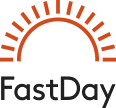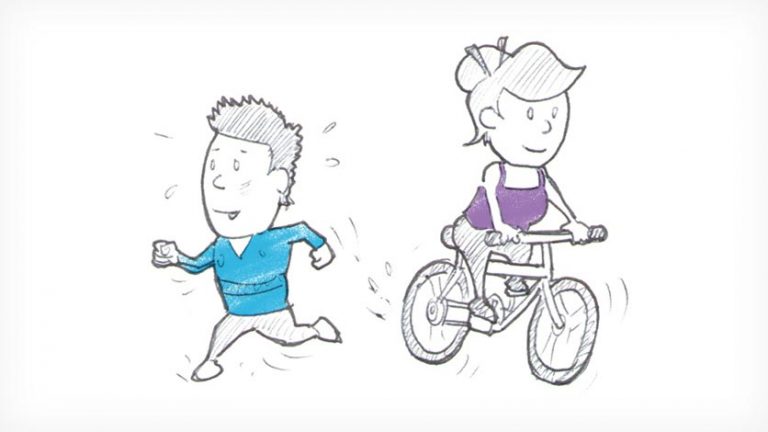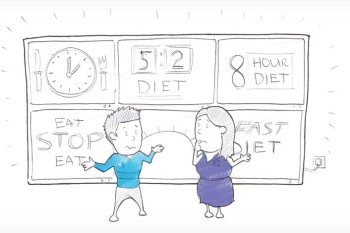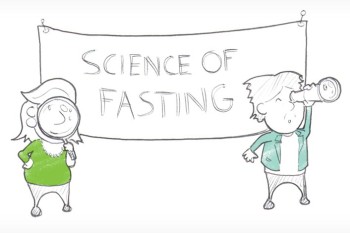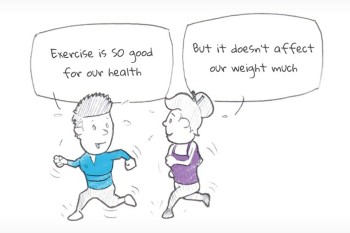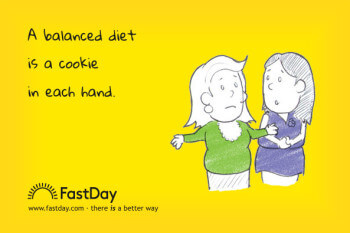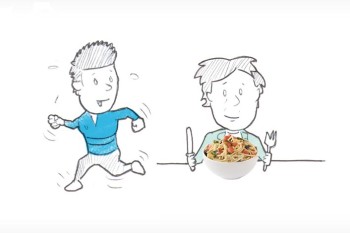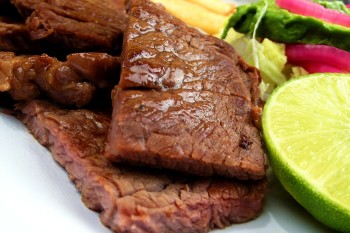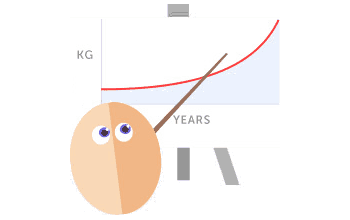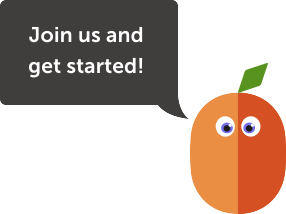The short answer is: yes! In fact, exercise on fast days will help use up your fat stores. Many fasters tell us they feel great, and full of energy, when they exercise on a fast day. Further, scientific studies have revealed that exercising while fasting is more effective than exercise on normal days – in terms of developing fitness and in the health benefits gained from exercise.
Learn more about the science of fasting
Exercising while fasting can speed weight loss
If you want to lose weight, exercise alone is not the answer. Numerous studies have found that exercise has very little effect on body weight.1 However, when you combine exercise with fasting it can boost weight loss.2 When you are fasting, your body turns to fat for fuel, so if you exercise in this state, you will burn more fat than if you exercise in the ‘fed state’.3 Exercising while fasting can also improve the way your body handles carbohydrates, reducing your risk of diabetes.4
Learn more about how exercise affects metabolism
Exercising while fasting can improve performance
Working out before breakfast has been found to improve performance.5 The changes that take place in your muscles and metabolism to improve your fitness happen more quickly5 and muscle growth is improved.6
Exercise while fasting can improve muscle repair
A study in mice found that exercise in the ‘fasted state’ improved the repair processes (autophagy) compared with exercising in the ‘fed state’.7
Exercise can stop hunger pangs
Experienced fasters know that exercise on a fast day is a sure way to quell the hunger pangs. Scientific research has confirmed this.8
Learn more about the latest research into fasting
What kind of exercise should I do?
The benefits of combining fasting with exercise apply to both weight-training, high-intensity and moderate/low intensity exercise. The experts in exercise science would probably say that ideally, for maximum health benefits, you should do all of these! However, as with intermittent fasting, the best kind of exercise to do is the kind that you enjoy and can keep doing.
There are some types of exercise that are harder to do when you have been fasting for a long time, and so may be difficult if done towards the end of your fast day. High intensity exercise like sprinting can only be done properly if you have enough carbohydrate stored. This is because while fat is a great fuel for your body to use, it cannot be burnt fast enough to provide the energy needed for high intensity exercise. Towards the end of your fast, and even some way into your next feeding period, your carbohydrate stores (i.e., glycogen) may well be low and you may find high intensity exercise hard to do. High intensity interval training (HIIT) is very beneficial to health, however, so try to make time for this early on in your fasting period (see below).
Low intensity exercise, like walking, doesn’t need stored glycogen and can be done at any time.
If you are interested in running, the FastDay forum has a keen group of runners, who will welcome you.
High intensity interval training
If you don’t have the time or inclination to spend hours in the gym or out running, or simply wish to maximize the health benefits of your exercise, you should consider including high intensity interval training (HIIT) into your life.
Research has found that a 3 bouts of 20 seconds of high intensity exercise done three times a week can have as many beneficial effects on the body as an hour of running on the treadmill.9
Indeed, the author of the Fast Diet book, Dr Michael Mosley was so impressed with the results of his experience of HIIT that he wrote another book: Fast Exercise which explains the science behind HIIT and guides you through how to do it.
Let your body adapt to fasting first
While exercise and fasting are great companions, it would be wise not to exercise heavily on your first fast or two. Until you have tried fasting you won’t know how your body will react. If you find no problems with fasting without exercise, then go ahead and try working out when fasting.
Stand up and walk!
Walking is almost always a good idea. It is good for you, gets you outside and distracts you from food.
How much you stand up and walk about rather than sitting can have a major impact on your health and can also help weight loss.10 Scientists call all the standing up and moving around that you do that isn’t formal exercise ‘NEAT’ (non-exercise activity thermogenesis). Overall, NEAT contributes more to how much energy you use than formal exercise. So, if you can increase your NEAT levels you can lose weight faster, and research shows that people who are on their feet more are generally healthier than those who spend all day sitting.
If you don’t feel like doing formal exercise on a fast day, remember that NEAT could be a neat way of increasing the benefits of fasting.
Increasing NEAT on both fast and feast days is a great idea. One way to see how much NEAT you are getting is to use an activity tracker or pedometer. You can buy a tracker, such as the FitBit, or use a smartphone app, such as Moves. These devices monitor how many steps you take each day. A commonly used target is to try to achieve 10,000 steps per day. Our FastDay forum has an enthusiastic FitBit group who compete with each other to get to the top of the steps leaderboard.
